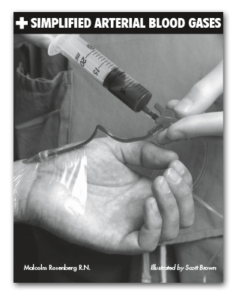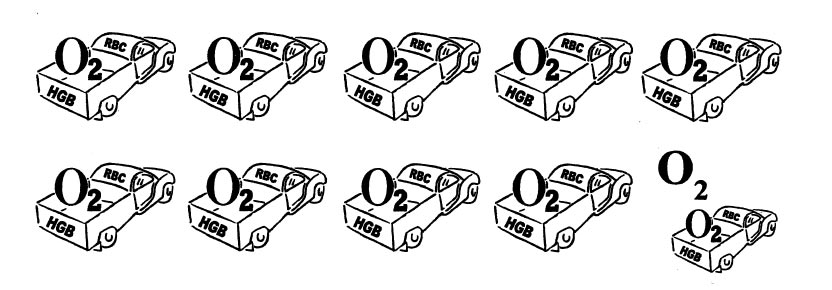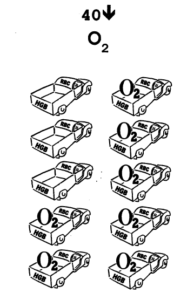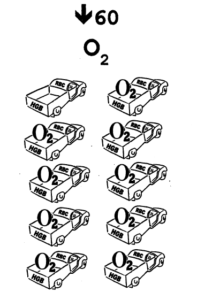
100 pages of cartoon level respiratory physiology and pathophysiology.
by Malcolm Rosenberg, RN
$18.95
Typically, blood gases are taught by having students memorize relational statements like this one, “If the pH is low and CO2 is high, then the condition is …” This is a quick and easy method which is usually as quickly forgotten as it is learned.
My approach is somewhat different. In teaching hospital CEU classes, I found that when students understood the physiology of respiration, it followed that pH, CO2 and HCO3 values made sense. This book, Simplified Arterial Blood Gases, includes the content, explanations and exercises from my course.
Each page presents one concept, illustrated with a simple, light hearted cartoon. In most cases, the information on each page can be understood independently of the page before it. In this way, you won’t get “lost” by wading too deep into material half-understood. Read each page, absorb the material, take a breather and turn the page. This sequence, repeated over the 100 pages and you will be ready to interpret ABGs.
Excerpt from Red Blood Cells & Hemoglobin chapter
After the oxygen diffuses into the blood, 98% of it attaches to the hemoglobin on each red blood cell.

A very small amount, about 2% floats freely in the bloodstream.

Definition: Oxygen Saturation
Oxygen Saturation is the percentage of red blood cells (hemoglobin) that have an oxygen molecule attached to it.

This is 90% saturation. Note that one in ten does not have an oxygen attached.
Relationship Between Oxygen Pressure (PaO2) and Oxygen Saturation (SaO2)
The amount of oxygen that attaches to the hemoglobin (02 Saturation) depends on the partial pressure (Pa02) of the oxygen floating freely in the bloodstream.
Here we see a Pa02 of 40mmHg pushes the oxygen to combine with 70% of the red blood cells.

More Pa02 more Sa02. Here we see a Pa02 of 60 pushes the oxygen to combine with 90% of the red blood cells.



